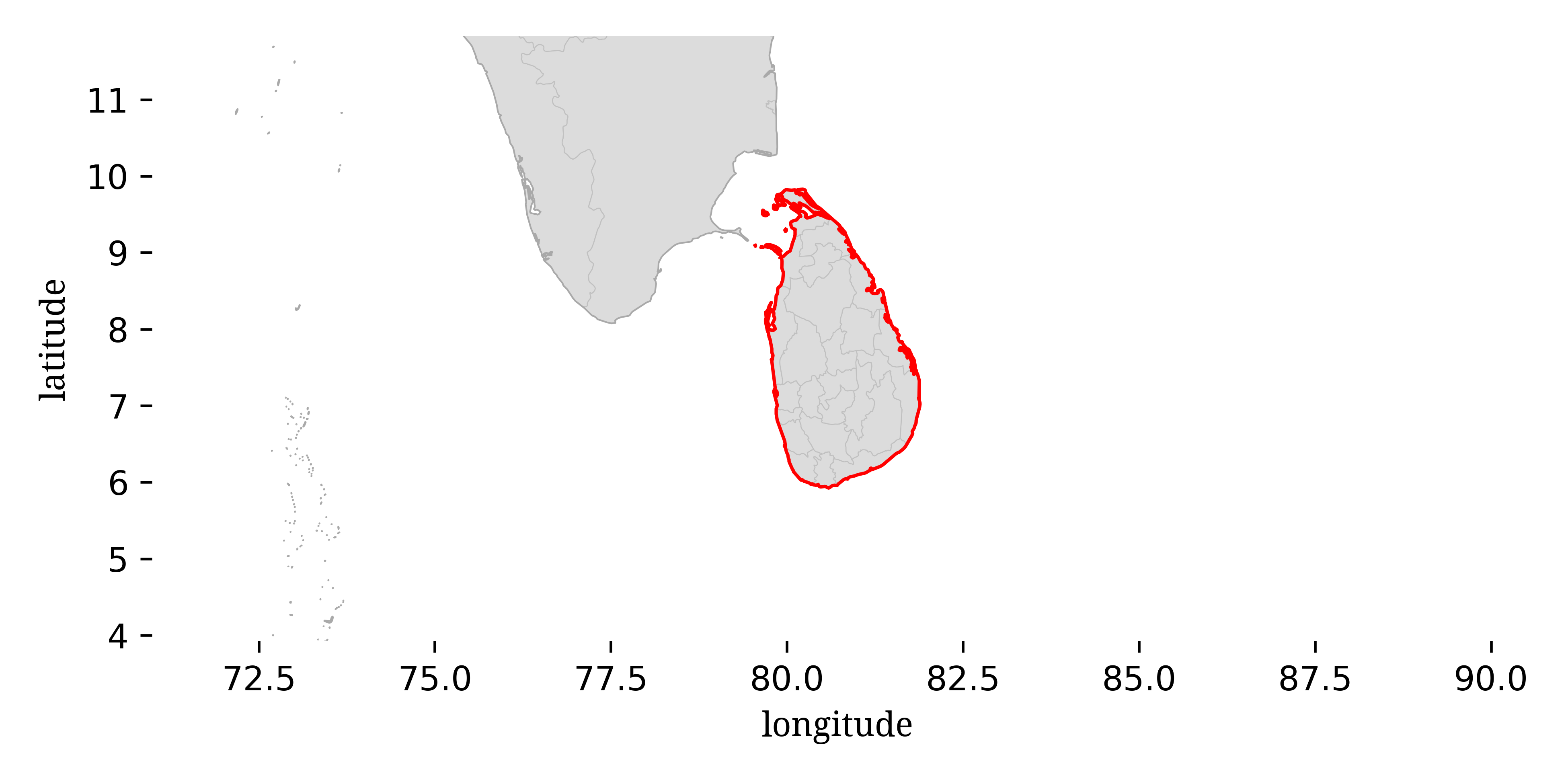
This guide is designed for identification “in the field” where you might be looking at live crabs by eye or through binoculars or from photographs. I will generally try to avoid characters that will require you to physically catch the crab, although I may mention a few for secondary verification. It does not include the more strict taxonomist-style characters that may only be visible under a microscope or via dissection. It is also assumed that the individuals are living, as death (and even capture) can cause dramatic color change.

This is a guide to the fiddler crabs of Sri Lanka, including three species:
Although only three species are currently recorded from Sri Lanka, it would not be surprising if a few others, e.g., Gelasimus tetragonon or Tubuca alcocki, were to be found on the island.
A number of features can be used to distinguish among these species, but a good place to start is to look at the distance between the base of the eyestalks. Fiddler crabs tend to split into two groups, those with the eyestalks very close together (“narrow front”) and those with the eyestalks separated a bit more (“broad front”). Two of these species (Austruca annulipes and Austruca variegata) are broad front species, while (Gelasimus hesperiae is a narrow front species.
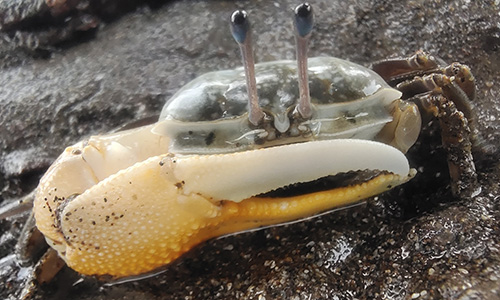
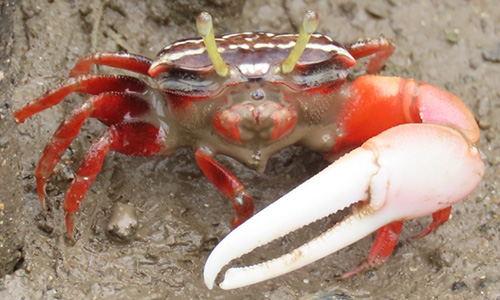
Gelasimus hesperiae is a narrow front species with a white or pale greenish-brown carapace and a distinctively shaped large claw. The dactyl on the large claw is usually white or pink, while the rest of the claw usually ranges from orange to pale yellow. The dactyl is relatively thick and straight for about half its length before clearly curving to a thick point. The pollex will frequently have two very clear large teeth, one about midway along the length and one near the tip, although one or both can be absent. It has large bumps (tubercles) on the hand of the claw and will often have a noticeable groove along the base of the pollex.
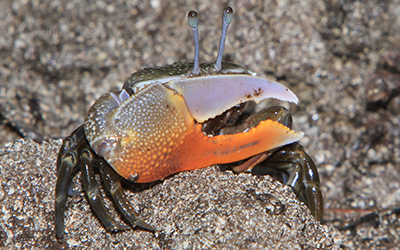
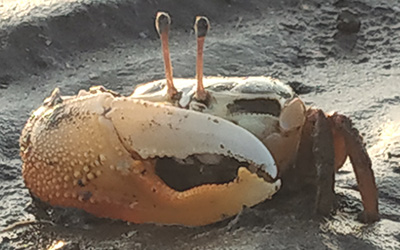
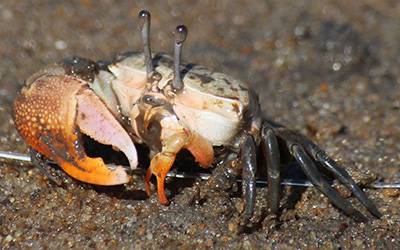
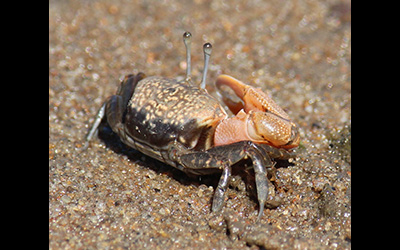
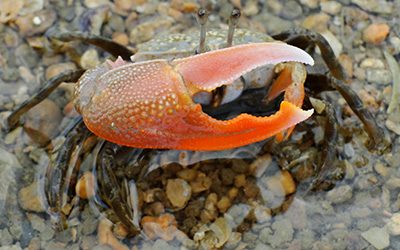
Austruca annulipes is a common, wide-spread species. Generally, the carapace of Austruca annulipes tends to be a mix of black and white. The large arm of Austruca annulipes is generally orange or red, with some of the color frequently found on the hand of the claw as well.
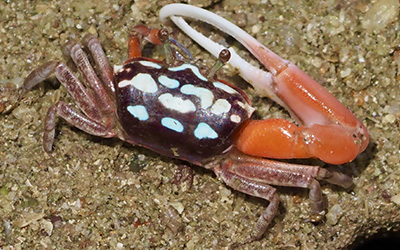
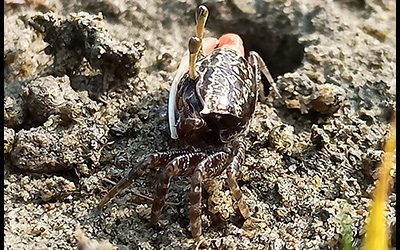
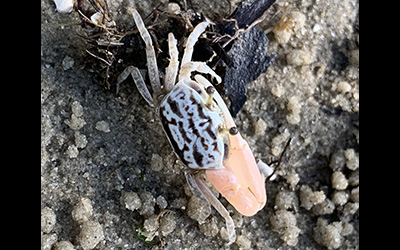
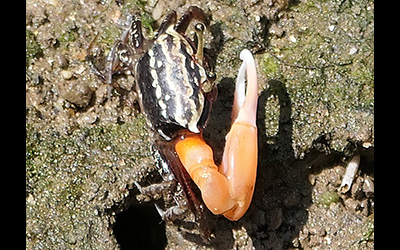
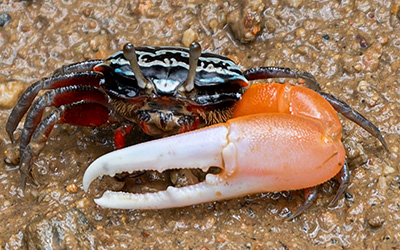
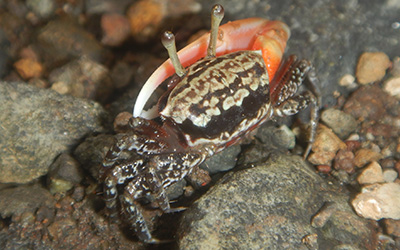
A fairly small species, Austruca variegata is easy to identify by color, as it almost always includes bright yellow. Its carapace is tends to be either a mix of blue, yellow, or white with black, or a solid yellow or white. Its large claw is almost always solid yellow.
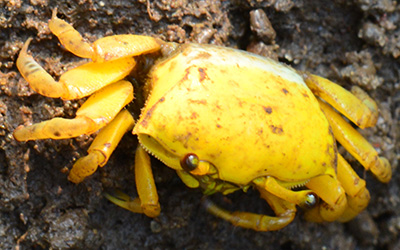
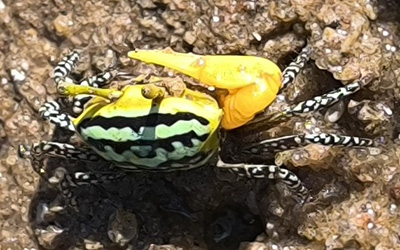

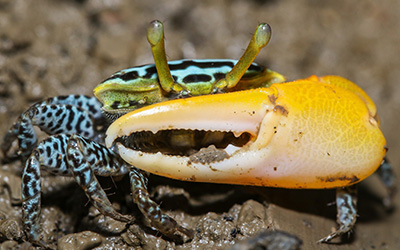
In addition to color, Austruca variegata has a distinctive carapace shape when seen from above. The front corners of the carapace are particularly pointed and the sides of the carapace slope inward at a much sharper angle than the other species found in the same area.